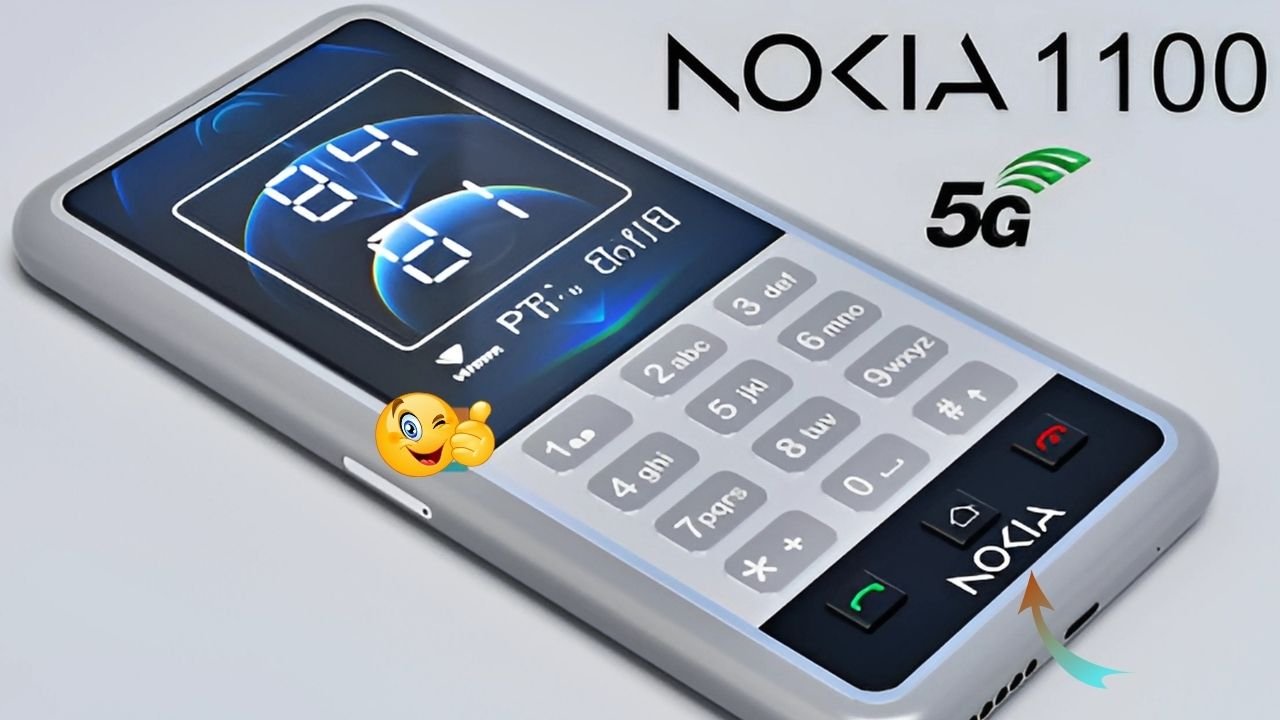Few devices evoke fond reminiscence quite like the original Nokia 1100, commemorated as the best-selling mobile telephone of all time. In 2025, the ever-adaptive HMD Global has opted to re-issue the emblematic handset—this time, however, with an accomplished degree of hybridization. The Nokia 1100 5G juxtaposes the pragmatic sobriety of an earlier era against the pervasive 5G spectrum and the app-based services of the present, courting aficionados of the original as readily as the digital-native individuals of Generation Alpha.
The immediate profile of the new offering is a deliberate homage to the indestructible keypad design that emblematic of the erstwhile device. Yet a meticulous refresh has transpired. The assemblage remains obligingly petite and rigorously no-nonsense, yet adopts an understated matte shell, an incrementally enlarged, non-touch LCD panel, and concave alphanumeric keys that invite keystrokes accomplished with sureness. In spite of the enhanced technical specification, the enduring principles of robustness, steadfast dependability, and deliberate simplicity have been scrupulously conserved—ensuring that the mobile is as functional as it is emotionally resonant.
Nokia 1100 5G Power
Among the unexpected strengths of this reimagined legacy design is integrated millimeter-wave 5G. Nokia has installed a miniaturized silicon module that delivers 5G data at low thermal output, bridging essential smartphone tasks without the overhead of excessive processing power. The phone is anchored by a lean, optimized version of the Android environment, pre-configured with universally relied-upon apps—WhatsApp, YouTube, and a lightweight web browser—exhibiting functionality without the burden of superfluous layers.
Nokia 1100 5G Battery
The defining characteristic of the original Nokia 1100 was indomitable endurance; this 2025 successor preserves that vow. The 1.8-inch form houses a lithium-polymer stack engineered for multiple days of mixed-use performance, a metric that has drifted toward insignificance among flagship devices. Coupled with an ultra-low-power system-on-chip, the phone is ideal for the frequent traveler or shift-worker who prefers duration over fleeting charging intervals.
Nokia 1100 5G Deliberate Design
Within a consumer environment saturated by premium-feature-overloaded handsets, the Nokia 1100 5G occupies a calculated position. Every attribute—true 5G, long-duration battery, and manageable sofware—was architected for the budget-conscious consumer who requires essential connectivity without extravagance. The anticipated price point is engineered to remain well under traditional subsidy thresholds, aiming at secondary-device adopters, pupils needing budget-efficient reliability, and minimalists who esteem straightforward yet contemporary telecommunications.
Nokia 1100 5G An Emblem of Sentiment and Solid Function
Reintroducing the Nokia 1100, now with 5G capabilities, stands as more than the unveiling of another model; it is a deliberate conjuration of memory, cloaked in contemporary circuitry. The company is wagering that the emotional bond forged in the 2000s will soften even the most hardened anticipations, while simultaneously appealing to the appetite for devices that will endure tumbles and tumbles, as other manufacturers pursue ever-slimmer screens and ever more fragile designs.
Nokia 1100 5G
The Nokia 1100 5G is not intended to supplant the polished, multi-camera flagships, but to fulfill a single covenant that is quietly disappearing from the flagship ratio: the quiet, unwavering obedience of a device that works. The synthesis of tear-welled reminiscence and microscopic 5G circuitry guarantees a bespoke cemetery of insignia. To slip the 1100 into one’s pocket today ought, at least, to feel less like a contemporary commerce and more like the quiet resumption of an old marital device.
